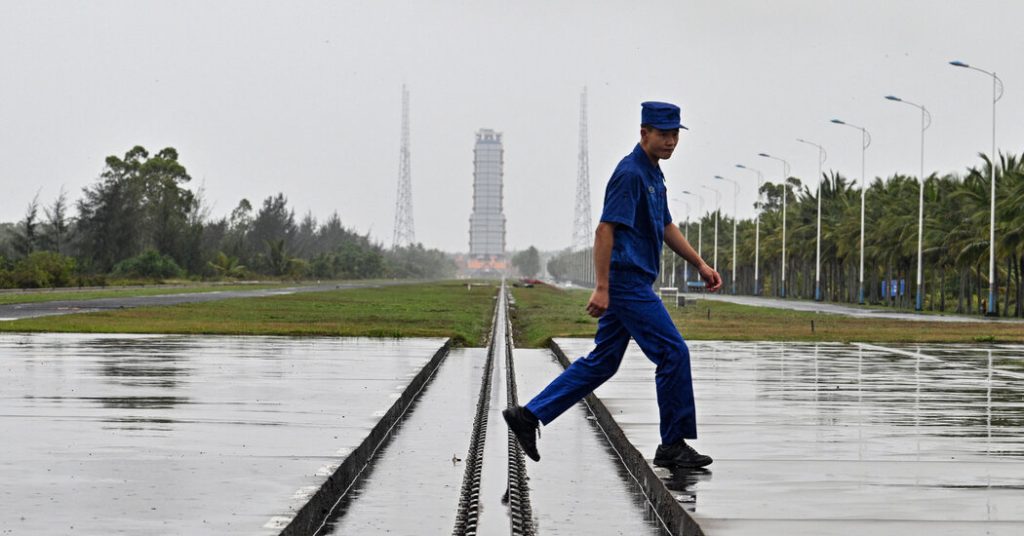China is set to launch its Chang’e-6 mission to the lunar far side, aiming to retrieve a sample from a part of the moon that is never seen from Earth. This mission will be the first in history to achieve this feat, providing valuable information about the origin and evolution of the Earth-moon system. Named after the Chinese moon goddess, Chang’e-6 is scheduled to launch on Friday from the Wenchang space site in southern China.
Chang’e-6 is part of a series of Chinese lunar missions, following the successful Chang’e-4 in 2019 and Chang’e-5 in 2020. The mission will take about a month to reach the moon’s far side, where an orbiter will circle it while the lander collects soil samples using a mechanical arm and drill. The collected material will then be transferred to the orbiter’s re-entry module for its safe return back to Earth. The mission aims to explore the differences between the near and far side of the moon and gather samples from the South Pole-Aitken basin.
China’s lunar exploration program is part of its broader space exploration goals, which also include missions to Mars and future visits to asteroids. The Chang’e mission series, which began in the 1990s, has had a 100 percent success rate so far. Future missions, such as Chang’e-7 and Chang’e-8, are already in development. Chang’e-7, expected to launch in 2026, will search for water at the lunar south pole, while Chang’e-8 will survey material for potential future infrastructure.
One of the challenges of exploring the lunar far side is the lack of direct communication with Earth, as the same side of the moon always faces us. To address this issue, China has deployed satellites like Queqiao and Queqiao-2 to relay information from missions on the far side back to Earth. These satellites will play a crucial role in maintaining communication with Chang’e-6 during the sample collection process. The mission aims to uncover more about the moon’s interior and geological history by retrieving material from the lunar mantle.
The far side of the moon is an intriguing area for scientific exploration due to its distinct geology and history. While samples have been collected from the near side of the moon by the United States, the former Soviet Union, and China, the far side remains largely unexplored. By retrieving material from the South Pole-Aitken basin, scientists hope to gain insights into the moon’s formation and evolution. The impact that created this basin is believed to have exposed material from the lunar mantle, providing valuable information about the moon’s internal structure.
China plans to send crewed missions to the moon by 2030 and aims to establish a permanent, international lunar research base in the 2030s. These ambitious goals reflect China’s growing presence in space exploration and its commitment to furthering scientific knowledge about the moon and beyond. The success of the Chang’e-6 mission will contribute crucial data to our understanding of the moon and its role in the broader solar system, paving the way for future exploration and discoveries.















